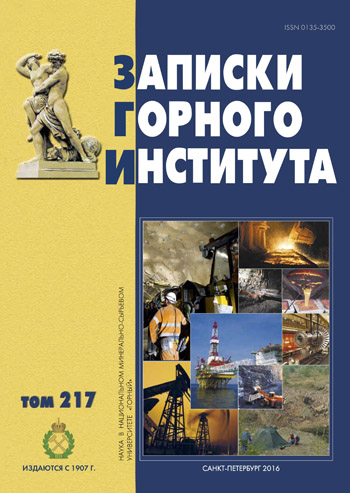Examination of the raw materials and the products of the combustible shales processing
- 1 — Ph.D., Dr.Sci. professor National Mineral Resources University (Mining University)
- 2 — Ph.D. associate professor National Mineral Resources University (Mining University)
Abstract
The reserves of combustible slates of Russia in shale oil and gas equivalent are more than the reserves of oil and natural gas. The formation of a large volume of ash is a major problem connected to the processing and the usage of the combustible slates. It is possible to look at this problem from a different angle of vision if a mineral part of slates is considered as a complex organo-mineral raw material where a mineral substance of the slates is the same raw material as the organic one. For this purpose, it is required to study in detail the physicochemical characteristics of the combustible slates and the behavior of the organic and the mineral parts of the slates during the heat treatment. This research focuses on the phase composition of Leningrad fuel shale and its changes on pyrolysis. They were studying the phase composition, the gas phase outlet, pyrolysis mass balance of combustible slates in the nitrogen atmosphere in the temperature range of 200-1000 °С, the porosity changes of combustible slate in the nitrogen atmosphere in the temperature range of 25-900 °С. It is determined that the main minerals of combustible slates are calcite (28 %), quartz (25 %), illite (17 %), and microcline (11 %). The temperature dependence of the shale porosity is studied in a nitrogen atmosphere and in air. The porosity changes in four stages: (I) 25-200 °C; (II) 200-400 °C; (III) 400-600 °C; (IV) 600-900 °C. The mass balance pyrolysis of combustible slates in a PTK_1.2_40 tube furnace is made up, in the nitrogen atmosphere of 200, 400, 600, 800 and 1000 °C.
